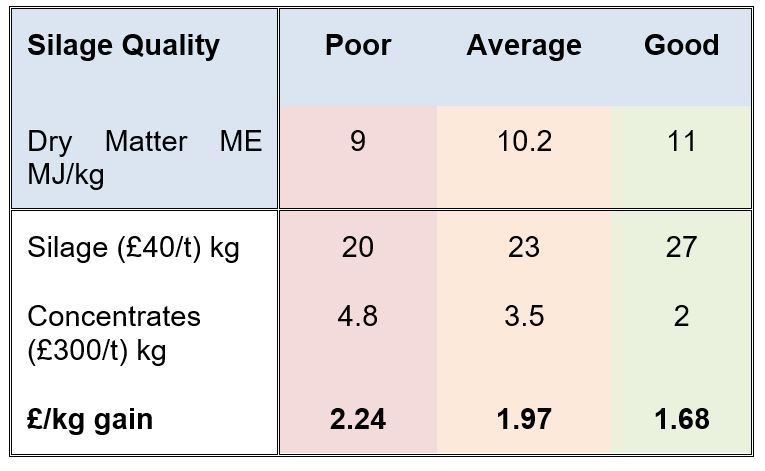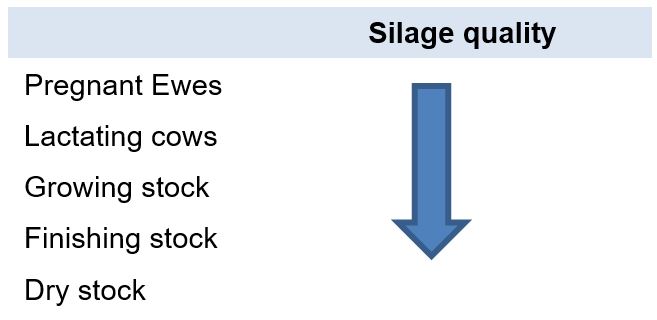Agribusiness News May 2023 – Input Costs: The Value of Good Silage
1 May 2023Targeting Forage Quality this Summer
With the cutting of silage over the next couple of months, planning for winter forage starts now.
Dairies are well accustomed to making well-preserved, high-powered silage to target for their milking cows and these principles can be applied in beef and sheep systems too.
Plan what forage is likely to be required, if you normally feed a lot of concentrate, is there an opportunity to make better quality silage to reduce the reliance on so much bought in feed?
View making good quality silage as an investment
Table 1: savings that can be made from making better quality silage for 400kg steer gaining 1kg/day

Over 150 days for 100 cattle, the diet cost difference between the rations above for poor and average silage is a staggering £4,050.
Wrongly assuming that your silage is ‘average’ when it is actually ‘poor’, would result in cattle only gaining 0.8kg/day, meaning that they would not only stay on farm an extra 38 days, but it would wipe £3,338 off their gross margin.
Managing Silage
Taking a note of the yield from each field and analysing each batch separately will help assess how grass is performing and where areas for improvement can be made for the following year.
Mark up bales stacks or on the side of the pit wall where different batches start and stop to make analysing and feeding out decisions easier.
When siting bale make access to different stacks easy so that they can be fed to the right stock based on their quality rather than where they are on the farm.
Short of Silage - Who Gets Priority?
With increasingly unpredictable seasons and weather patterns, managing silage stocks can be challenging. If you have a range of silage qualities and/or your forage budget shows that you are going to be running low, targeting forage quality to stock on your farm can help to maintain productivity levels.
The table below shows what stock categories take priority over others:

Regardless of whether you make good silage or poor silage, the worst thing is not knowing what you have. Without that knowledge, feeding and managing animals correctly is difficult and will be far more costly in the long run.
Having your silage analysed and getting your rations checked by a livestock nutritionist can save your business both time and money.
Sign up to the FAS newsletter
Receive updates on news, events and publications from Scotland’s Farm Advisory Service

